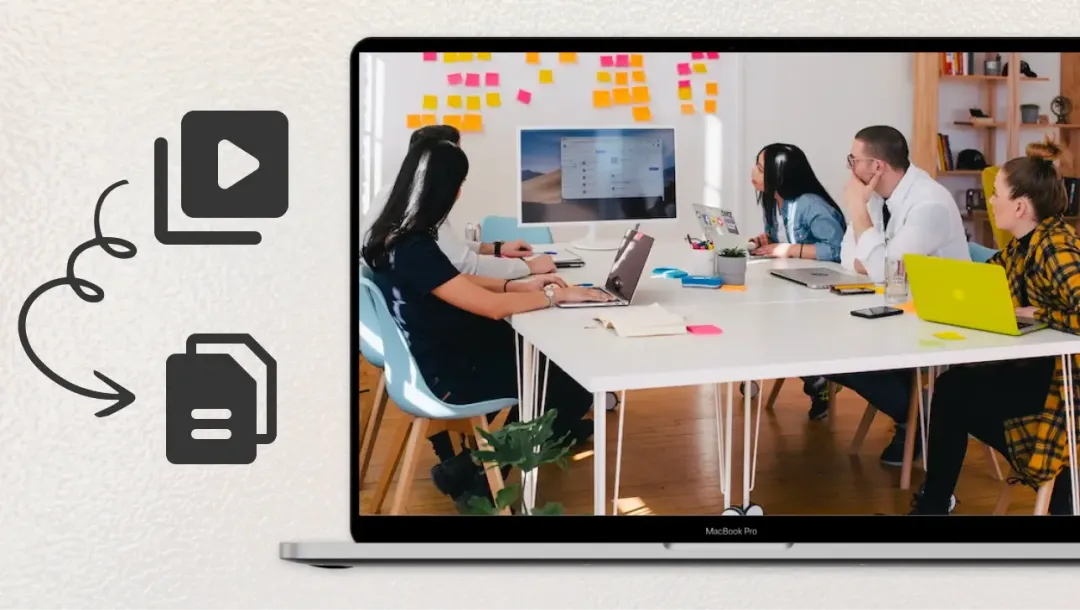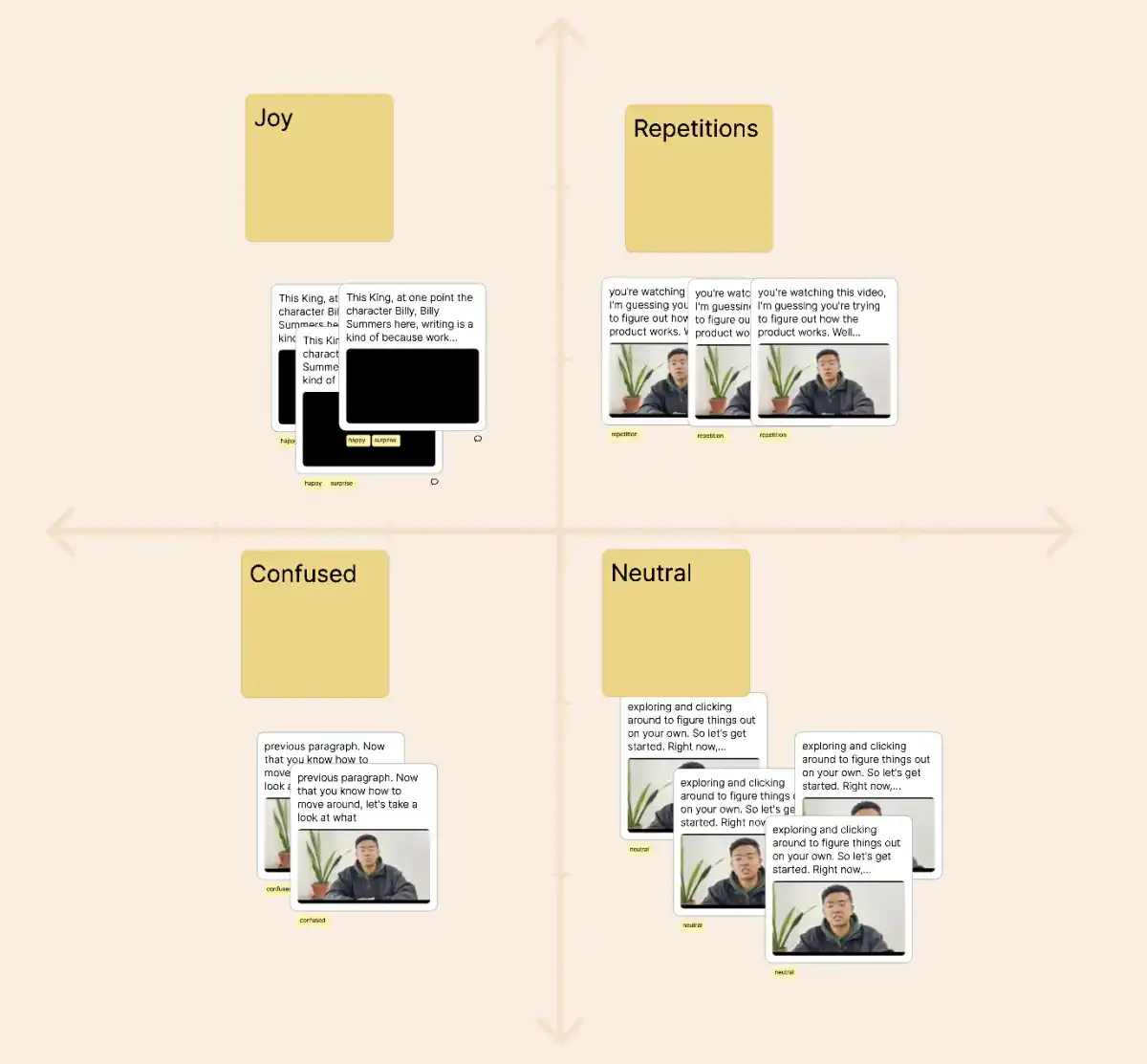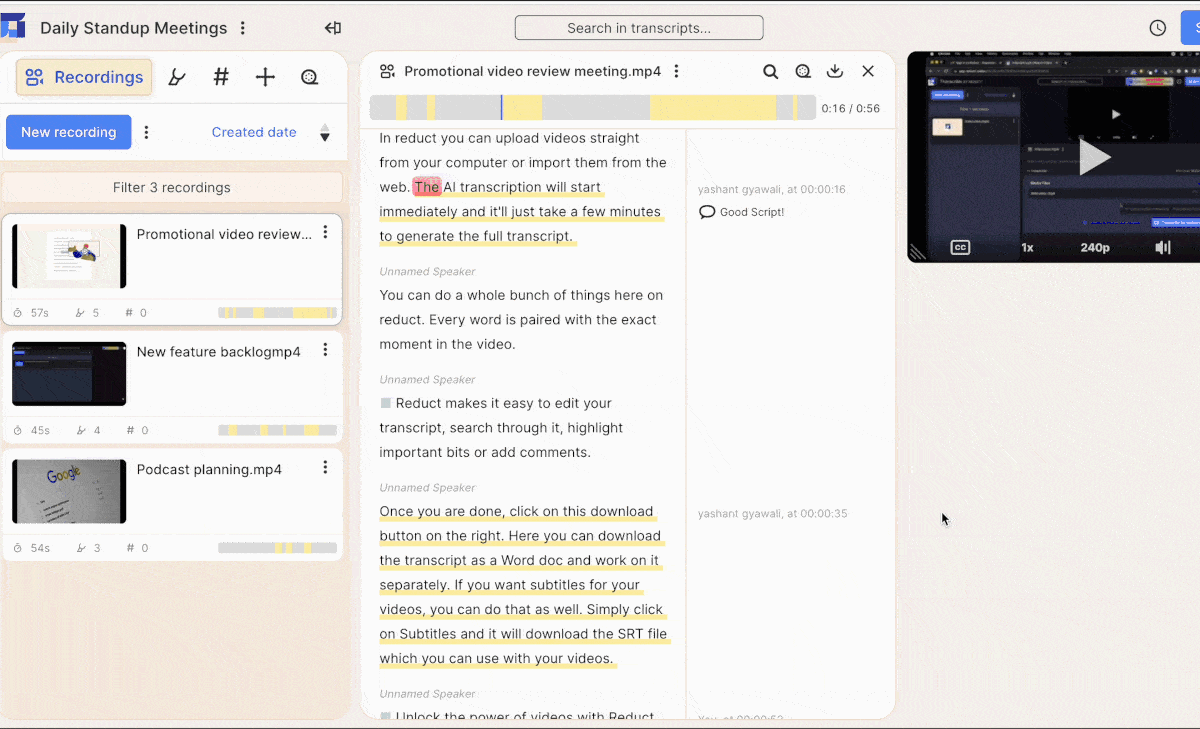3 Reasons Why Transcription is Important to Your Design Research
February 2023
·
2 min read

In 2021 according to the ‘State of User Research Report’, 65% of the surveyed researchers used transcription for their research sessions- a rise from 2020 when 49% relied on transcripts.
It is no surprise that transcripts have gained popularity as these artifacts are crucial when organizing information, seeing trends in design research sessions, and helping researchers build effective designs.
Here are four reasons why design research transcription is important and why you need to make it a part of your design research process.
1. Emphasizes more on identifying patterns rather than taking notes

Imagine noting down everything while staying engaged in a conversation with multiple users in an interview or meeting. That is easier said than done.
It’s almost impossible to focus while maintaining notes. You can rather put the burden of maintaining all the details on a quick and accurate research transcription service.
That way, you can review and analyze the conversation in detail, identifying key themes, patterns and insights that may not have been apparent during the interview. These themes will help you tag and organize your interviews, as well as identifying the best quote to highlight.
💡Bonus Tip: With Reduct, all your research transcription is synced the the video, making your videos searchable. You can quickly jump to a part of a video by clicking on the text. You’ll have quick access to not just the words that were said, but to other nuances like facial expression, and perhaps most importantly, what"s left unsaid.
2. Ensures credibility in research
In a field where data can be subjective, research transcription provides an objective record of words said during an interview. This transparency can be critical in establishing the credibility and integrity of the research findings.
It can also help to prevent bias or influence during the analysis process.
By using the research transcripts as a starting point, researchers can ensure that their analysis is based on the data and not their interpretations or biases.
An example of user interview of one of our customer:
💡Pro Tip: Share a video snippet of your users talking about the pain-point rather than sharing your interpreted notes with your stakeholders.
3. Facilitates collaboration in research analysis
Design research transcription facilitates collaboration among team members by making research more accessible. By having a written record of research data, you can also share the transcription with individuals who may have difficulty listening to audio.
This can help to ensure your research is inclusive and reaches a wider audience. It also ensures that multiple team members can share, review and analyze the same information.
With online collaborative tools like Google Doc or Reduct, you can have multiple stakeholders analyzing the same piece of research in real-time.

This can lead to more comprehensive insights and recommendations from researchers with different perspectives and areas of expertise.
Sharing the important moments from an interview in the form of user quotes or video snippets will help you better present your story with the stakeholders..
💡Pro Tip: Agree on a predefined set of tags/code to use to highlight patterns and themes of user activities for consistency. For instance, you can use the word "repetition" to tag moments where the user repeats themselves during an interview.
Supercharge your Design Research Workflow with Reduct
It is therefore crucial for designers to recognize the importance of transcription and integrate it into their research process with the help of a professional transcription solution like Reduct.
By leveraging the power of Reduct, design research teams can gain a deeper understanding of user behavior, preferences, and needs, and develop products and services that better meet those needs.

![[Advancing Research 2022] What Design Research can learn from Documentary Filmmaking](/static/a0a907b113aa60d7720b84b21e85dbaa/06771/documentary-film-meets-design-research.webp)
